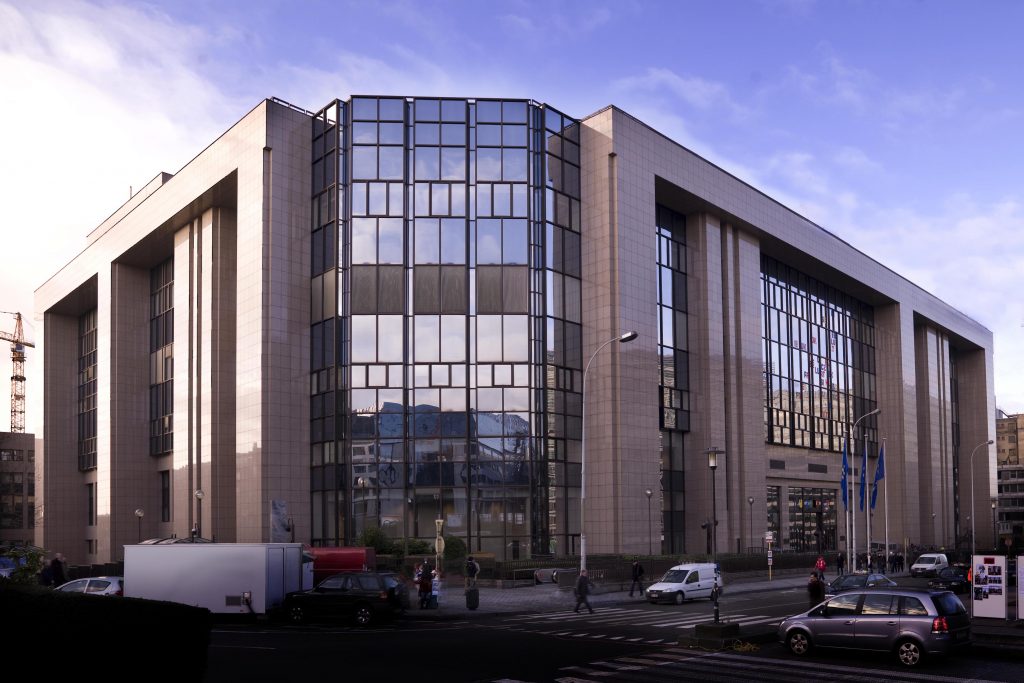A new publication in the Journal of Common Market Studies by TrUE project researcher Maarten Hillebrandt demonstrates how informality may help explain anomalies in Council transparency policy.

Analyses of EU transparency traditionally focus strongly on its legal development with little attention to informality. In such accounts, the Council of the EU is routinely understood as an obstructionist force blocking the expansion of transparency, only to be strong-armed into concessions by external pressure. However, in the Environment Council, a formation of the Council of the EU, transparency policy developed quite differently. Here, the Council actively promoted the expansion of rule-based transparency, while NGOs hardly made use of these legal transparency rights. A close analysis suggests that informality –often dismissed as anomalous or overlooked outright– takes a central place in explaining this peculiar development.
In the Environment Council transparency policy developed quite differently than received wisdom would have us expect. Here, the Council actively promoted the expansion of rule-based transparency, while NGOs hardly made use of these legal transparency rights.
EU transparency, when conceived as a formal policy, consists of a framework of rules and their implementation in practice. Among the rules, Regulation 1049/2001 on access to the institutions’ documents counts as the central piece of legislation. In the area of environmental policy, the Environment Council went further, with the EU signing up to the UN-sponsored Aarhus Convention, which eventually led to Regulation 1367/2006. This lex specialis, which created a more expansive EU environmental information regime, was adopted without noticeable member state resistance. Most observers, both inside the Council and outside of it, agree that the Environment Council implements these rules faithfully and without undue restrictions, especially when compared to other Council formations. Yet while environmental NGOs (ENGOs) lobbied hard to expand formal transparency rights, they themselves made limited use of them.
Too good to be true?
Based on what we know of the Council’s transparency-sceptical attitude in other policy contexts, as well as ENGOs’ emphasis on transparency, the ‘dormancy’ of a highly developed Environment Council transparency policy is counterintuitive. The recently published article by TrUE researcher Hillebrandt argues that the explanation lies in informal norms which the Environment Council and its members mobilise to ‘repair’ elements in the formal transparency framework that they consider either too restrictive or too lenient from the perspective of transparency. As Helmke and Levitsky argue in a seminal publication, to properly understand formal policy frameworks, they must be regarded in light of their interplay with informal solutions. By filling remaining gaps, compensating shortcomings, buffering impacts, or purely contradicting, informal norms can take a structural character that fundamentally alters –or even brackets– the functioning of formal rules. Studying transparency policies without considering the informal norms’ bearing on them will render such policy incomprehensible or provide a grossly distorted picture.
Studying transparency policies without considering the informal norms’ bearing on them will render such policy incomprehensible or provide a grossly distorted picture.
Informality thus serves as a response to certain aspects of transparency rules. In the context of the Environment Council, chiefly three scenarios are imaginable in this respect. First, the Environment Council could perceive a need to balance formal transparency requirements against efficiency needs. This would primarily undermine transparency rules, to the benefit of confidentiality. Second, the Council could subordinate formal transparency duties to functional requirements, tailoring information sharing to its needs at every stage of the decision-making process. This would not result in outright information suppression, but in the strategic timing of disclosure. Third, informal norms could be volatile, as different member states seek to institutionalise informal norms to varying, changing ends. This would translate into informal norm conflict and, for ENGOs, information venue shopping.
Playing beyond the rules
A close analysis shows that informal norms indeed have a major impact on the way in which the Environment Council approaches its formal transparency obligations. Informality does not always limit access to information. For instance, several environmental affairs ministries maintain close contacts with their nationally based ENGOs about ongoing Council legislation, while at the European level, a representative has traditionally been invited to participate on behalf of the ENGO community in the half-yearly informal Environment Council meeting. Some member states even go as far as to engage in the unauthorised sharing of documents with stakeholders, or leaking them to the press. All these activities serve to expand access to information beyond, or even against, what the rules allow, although mostly for privileged groups of outsiders, and often for politically strategic, rather than transparency-promoting ends.
A close analysis shows that informal norms indeed have a major impact on the way in which the Environment Council approaches its formal transparency obligations. But informality does not always limit access to information.
At the same time, various informal norms also limit access to Environment Council information. One of these is the so-called ‘limite’ label, an informal document classification which prevents (legislative) documents from being directly disclosed or shared with outsiders, as well as the internal agreement to withholding the identity of member states suggesting amendments when disclosing documents concerning ongoing legislative negotiations. After this latter practice was struck down by the Court of Justice, the Council decided to leave references to member states out of the document altogether. A different situation occurred with respect to so-called trilogue negotiations, which were originally conceived to create an informal legislative negotiating space between the Council and the Parliament beyond the reach of the transparency rules. Ever since the Court of Justice struck also this legal interpretation down, both institutions have de facto been breaking the rules by continuing this secretive practice.
Governing informally: a volatile affair
Searching for patterns in the above-described informal norms for regulating access to information in the Environment Council, it soon becomes clear that they do not fully match with the first two of the above-described scenarios. Some balancing informality occurs, but remains relatively rare due to member states’ wide divergence on the question how much informal transparency suppression is acceptable. Informal transparency norms also follow to some extent functional patterns, with different norms applying to different stages of the decision-making process. In this regard however, it is unclear why ENGOs should be involved in Environment Council meetings. Both scenarios moreover fail to explain the very preponderant practice of document leaking. It would seem that document leaks serve as a ‘release valve’ from the information control created by the formal transparency rules and informal norms.
Informality clearly paints the formal legal access regime in a different light. Various informal norms allow the Environment Council to ‘repair’ transparency rules where the member states consider them difficult to cope with.
The empirical picture shows most congruence with the volatility scenario. This scenario places the emphasis on change and incoherence in the Environment Council’s informal handling of the transparency question. Developments such as the 2004 EU enlargement, and two transparency court cases that rendered previously ambiguous norms explicitly illegal, did indeed alter interactions within the Environment Council and between member states and ENGOs, leading to revisions in informal responses. Conflicting but simultaneously operating norms such as transparency suppression through the ‘limite’ label and document sharing through member states moreover highlight that such revised norms were underpinned by clashing motives between different actors in the Environment Council.
In sum, the informal aspect of Environment Council transparency policy clearly paints the formal legal access regime in a different light. Various informal norms allow the Environment Council to ‘repair’ transparency rules where the member states consider them difficult to cope with. This helps to explain why the Environment Council has not proved very reluctant to expand formal transparency rights over time. Informal limits on formal transparency rights also explain ENGOs’ limited reliance on these rights: for the purpose of advocacy, they offer too little, too late. Instead, ENGOs walk informal roads in search of useful policy information related to Environment Council decision making. The fact that they often find insiders willing to informally provide them with such information illustrates that contesting notions of ‘repairing the rules’ are prevalent in the Environment Council. -MH
This short article will soon appear on the JCMS blog ‘Ideas on Europe’.
The Journal of Common Market Studies article can be accessed here.

